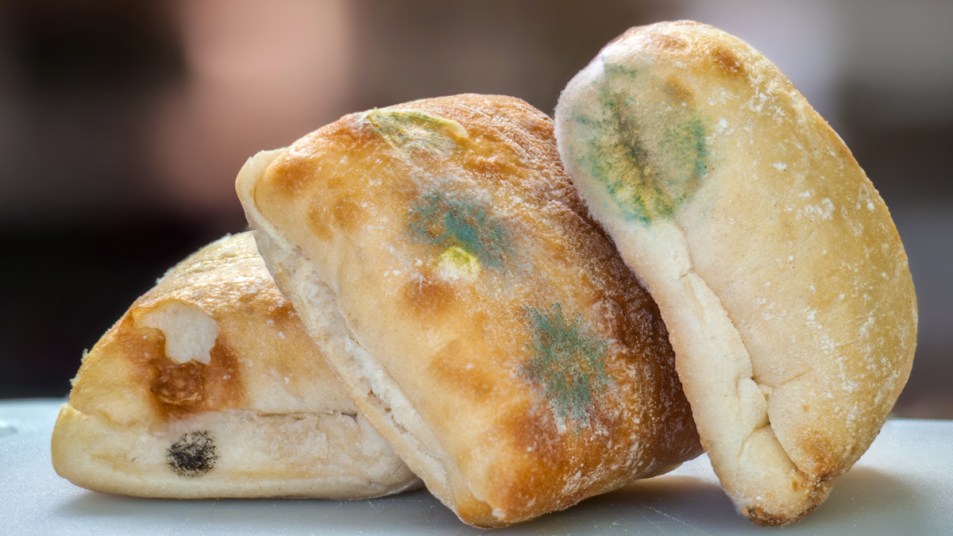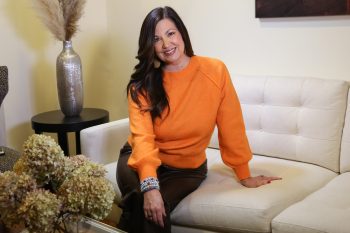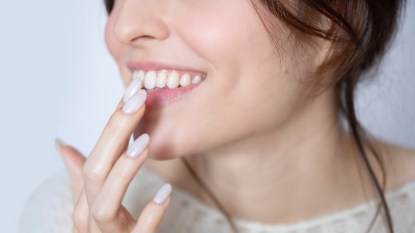What Happens If You Accidentally Eat Mold?
It's usually not good news — but there are some surprising exceptions

Mold can show up anywhere — in the coffee-maker, in our trash can, on our mattress — and most often, around our food. We all know the feeling of disgust we get after seeing harmful mold on food in the fridge. If you’ve ever had the misfortune of accidentally tasting said mold, you know that feeling is about a billion times worse. But what happens if you eat mold accidentally? Here’s the good news: You’re most likely not going to die or fall seriously ill if you mistakenly ingest a bit of the nasty stuff, especially if you’re an otherwise healthy adult with a strong immune system.
That said, food experts agree that eating mold is usually far from being an ideal situation. As you probably know already, you should generally avoid consuming it — with a few exceptions. There are some pretty darn good reasons why.
What happens when you eat moldy bread?
Sure, we’d all rather eat the freshest bread possible, but if mold appears, you might have heard advice from some folks to simply cut away mold on bread before eating it. Don’t listen to them! Food safety experts warn that you should steer clear of moldy bread, especially since bread is such a soft food. As Marianne Gravely, senior technical information specialist for the United States Department of Agriculture (USDA), told NPR in an interview, the roots of mold can penetrate quite deeply into your beloved loaf or baguette.
“I’m sure some people would really want to press the situation, but bread is cheap,” Gravely said. “Go buy some more.”
According to Gravely, mold on bread is nothing to mess around with. It can potentially cause allergic reactions and respiratory problems if ingested. In some cases, even inhaling such mold can be dangerous. The worst part? As Gravely said in another interview with The New York Times, you’re only seeing the tip of the iceberg when you look at the mold on bread that’s visible to the naked eye. She added, “You might not be able to tell how far it’s gone.”
What happens when you eat moldy cheese?
As any avid cheese fan can probably guess, the answer varies widely depending on what type of cheese we’re talking about. After all, some types of mold are actually used to create certain cheeses in the first place, such as Brie or Gorgonzola. So if you eat those specific molds, chances are that the only thing that will happen is that you’ll be very full and happy afterward. (Just make sure there’s no new mold growing on those cheese after you buy them.)
That said, you’ve probably heard that many soft cheeses, like cottage cheese, cream cheese, and ricotta cheese, should be tossed immediately if you discover mold on them. According to Katherine Zeratsky, RD, the same goes for any type of cheese that has been crumbled, shredded, or sliced. On the Mayo Clinic website, Zeratsky writes, “With these cheeses, the mold can send threads throughout the cheese. In addition, harmful bacteria, such as listeria, brucella, salmonella, and E. coli, can grow along with the mold.” In other words, you’re putting yourself at risk of ingesting these types of bad bacteria, which can lead to nasty symptoms such as diarrhea and vomiting.
But what about hard and semi-soft cheeses, like your beloved cheddar, Parmesan, or Swiss? In cases like these, you might have a little more leeway — depending on how much mold is actually on the cheese. Since mold typically can’t penetrate hard and semi-soft cheeses, you can cut away the moldy part and eat the non-moldy sections of the cheese. Just be sure to cut at least one inch around and below the mold, and keep the knife out of any contaminated spots. Otherwise, you can risk ingesting the same type of nasty bacteria that you would with a soft cheese. And always remember the most important rule of the fridge: When in doubt, throw it out! (Some suggest storing your slices and wheels of cheese with a few sugar cubes to prevent mold from growing in the first place.)
What happens when you eat moldy produce?
If you’ve noticed a theme so far of soft foods with mold being a greater risk to eat than hard foods with mold, you’re absolutely correct. According to the USDA’s website, the same is also true for pieces of produce. When it comes to firm fruits and vegetables, such as cabbage, bell peppers, and carrots, you can cut off at least one inch around and below the mold spots (making sure you don’t put the knife into the mold) and eat the rest of the uncontaminated food. Since it’s tough for mold to penetrate dense, low-moisture foods, you should be totally fine to eat the rest of it.
However, if you spot mold on soft fruits or vegetables, like peaches, tomatoes, or cucumbers, it’s time to throw them in the trash can. Since these pieces of produce have so much moisture in them, the mold can penetrate below the surface. Not only will a moldy piece of fruit or vegetable taste absolutely awful, it can also put you at risk for developing foodborne illness, leading to nasty symptoms like diarrhea and vomiting.
Let’s keep our meals (and ourselves, and our loved ones) as happy and healthy as possible!













